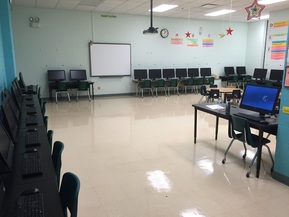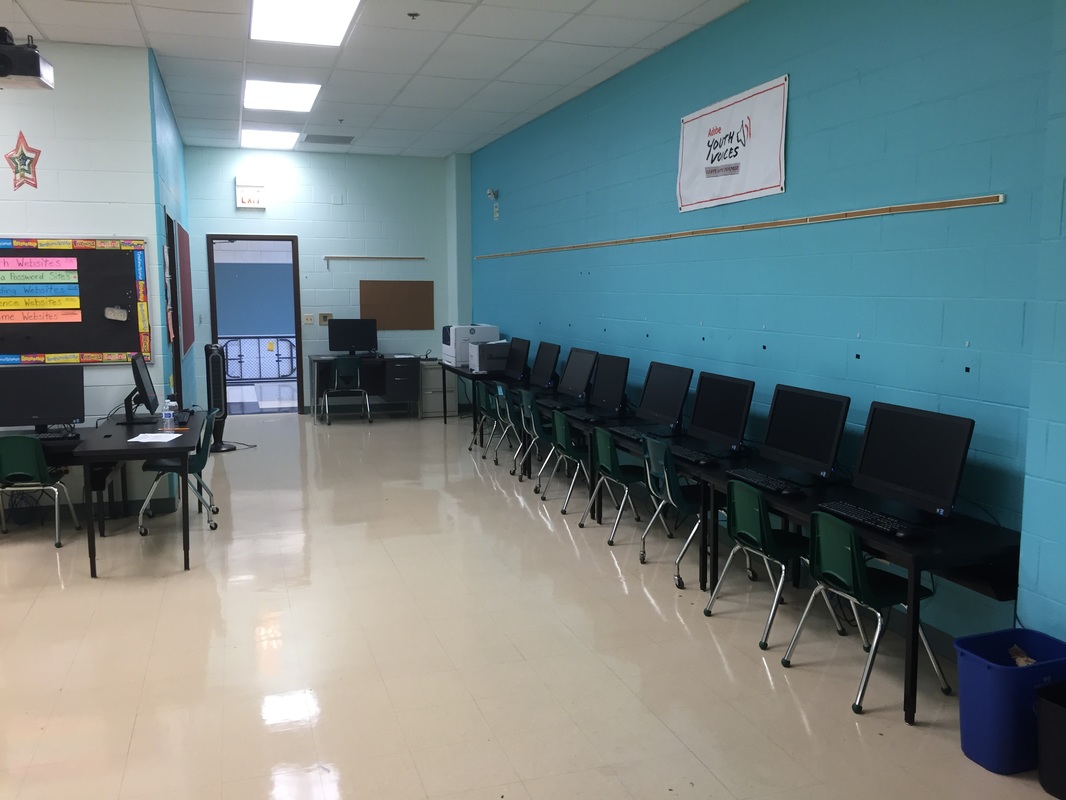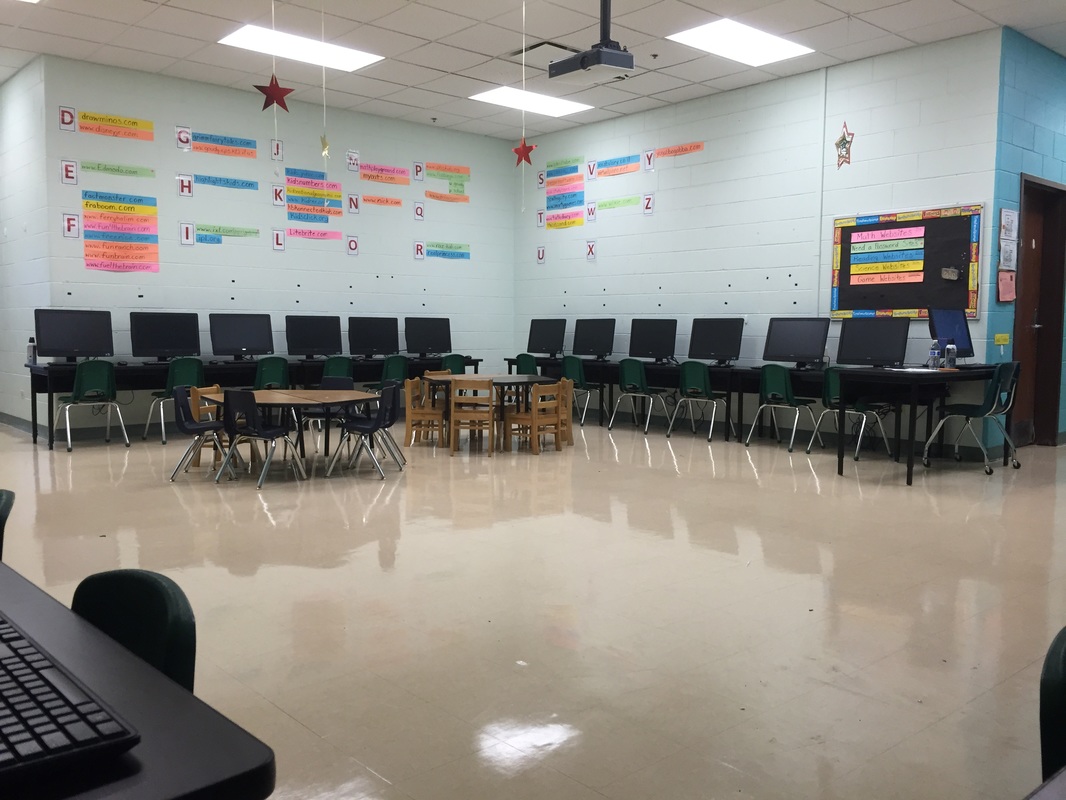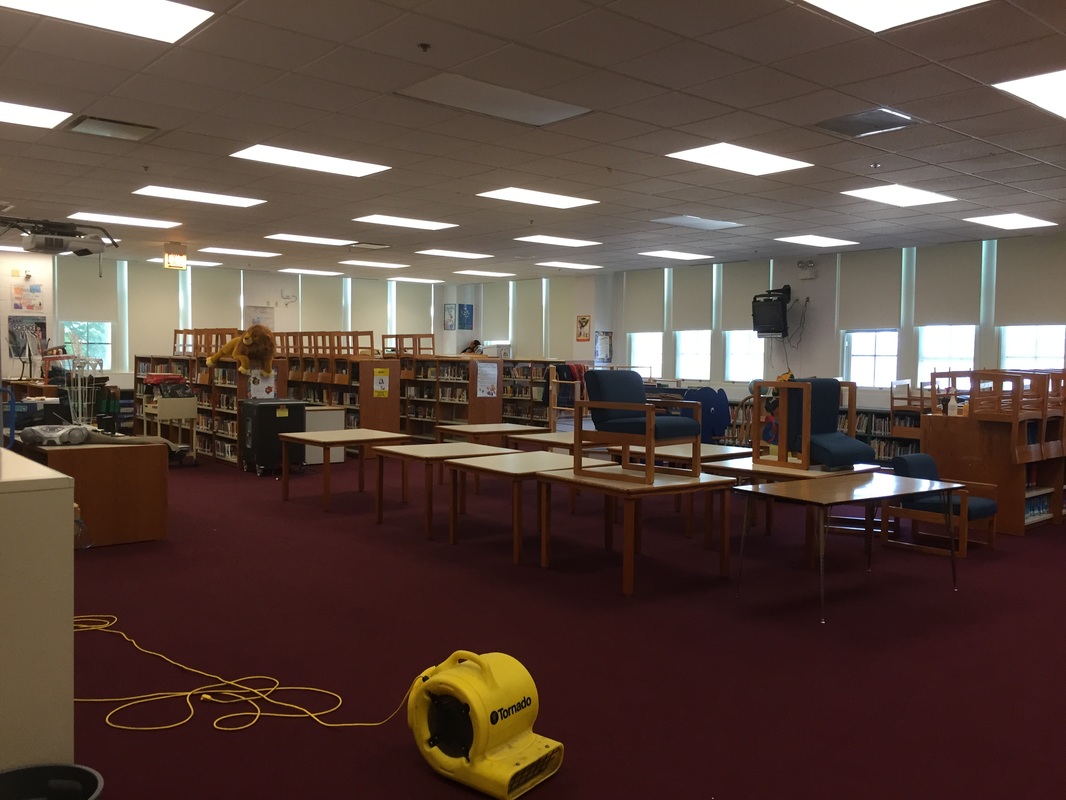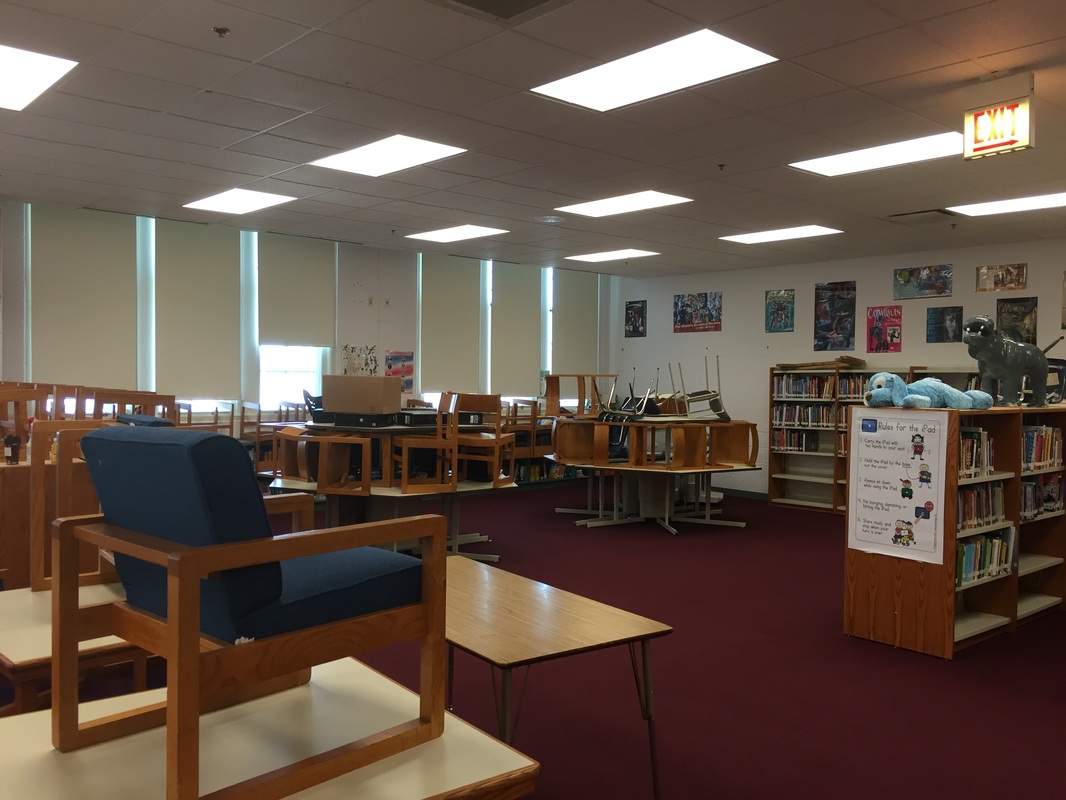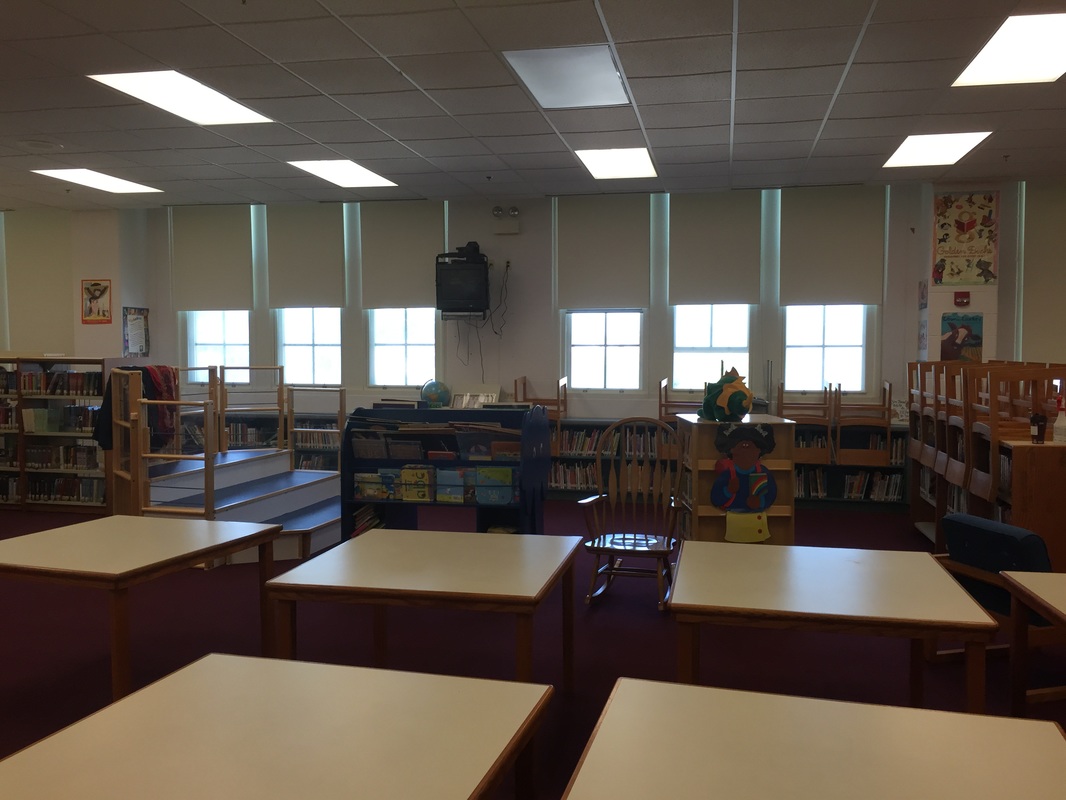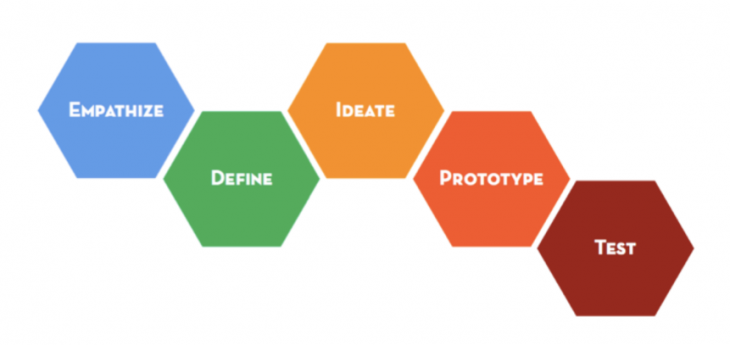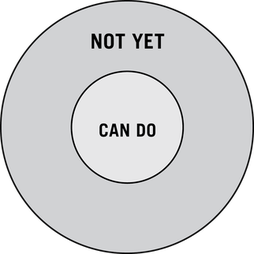Phase III: Action Plan
Desired Results
Every educator knows there are multiple pathways to learning. Some students learn best from listening or reading, others from dialogue, some from reflection, and still others from the creation of artifacts. My vision at Goudy Technology Academy is to create and foster the Maker’s mindset in my students through the creation of a Makerspace. Carol Dweck has written a book called, “Mindset: The New Psychology of Success.” In this book she distinguishes between people with a fixed or growth mindset. A person with a fixed mindset tends to believe that his or her capabilities are set, as though these abilities were out of their control. This mindset describes most of my students. A person with a growth mindset tends to believe that one’s capabilities can be developed, improved, and expanded. A person with a growth mindset tolerates risk and failure while a person with a fixed mindset avoids it and the accompanying frustration. This growth mindset is similar to the Maker’s mindset. Making is about developing one’s full potential. I want my students to have a growth mindset that leads them to expend their energy to learn, to take risk and through repeated failures to achieve success.
I believe that the entire makers movement is a source of innovation. The key idea for students is to be playing and figuring things out in groups and individually. The creation of a Makerspace is my vehicle for students to engage in science, technology, engineering, arts/design, and mathematics (STEAM) topics while fostering the development of important 21st century skills including: adaptive problem solving, creativity, self-directed learning, persistence, and grit. It isn’t enough to train my students for the world today. I need to train them for tomorrow, a tomorrow that will require them to master technologies that do not yet exist. Therefore, it is crucial for me to develop timeless skills in students such as curiosity, creativity, and the ability to learn on one’s own. These are precisely the skills that make up the Maker’s Mindset and will allow students’ to flourish in a Makerspace environment.
In a growth mindset, people believe that their most basic abilities can be developed through dedication and hard work. This view creates a love of learning and a resilience that is essential for great accomplishment. Through this mindset, I hope to engage students as makers who learn how to use tools and processes to help them reach their own goals and realize their own ideas. As a class, we will be exploring the Stanford Design Thinking process of empathy, defining a problem, ideating solutions, prototyping, and testing. My goal for the year is to subtly and slowly shift their fixed mindset to a Maker’s mindset.
Every educator knows there are multiple pathways to learning. Some students learn best from listening or reading, others from dialogue, some from reflection, and still others from the creation of artifacts. My vision at Goudy Technology Academy is to create and foster the Maker’s mindset in my students through the creation of a Makerspace. Carol Dweck has written a book called, “Mindset: The New Psychology of Success.” In this book she distinguishes between people with a fixed or growth mindset. A person with a fixed mindset tends to believe that his or her capabilities are set, as though these abilities were out of their control. This mindset describes most of my students. A person with a growth mindset tends to believe that one’s capabilities can be developed, improved, and expanded. A person with a growth mindset tolerates risk and failure while a person with a fixed mindset avoids it and the accompanying frustration. This growth mindset is similar to the Maker’s mindset. Making is about developing one’s full potential. I want my students to have a growth mindset that leads them to expend their energy to learn, to take risk and through repeated failures to achieve success.
I believe that the entire makers movement is a source of innovation. The key idea for students is to be playing and figuring things out in groups and individually. The creation of a Makerspace is my vehicle for students to engage in science, technology, engineering, arts/design, and mathematics (STEAM) topics while fostering the development of important 21st century skills including: adaptive problem solving, creativity, self-directed learning, persistence, and grit. It isn’t enough to train my students for the world today. I need to train them for tomorrow, a tomorrow that will require them to master technologies that do not yet exist. Therefore, it is crucial for me to develop timeless skills in students such as curiosity, creativity, and the ability to learn on one’s own. These are precisely the skills that make up the Maker’s Mindset and will allow students’ to flourish in a Makerspace environment.
In a growth mindset, people believe that their most basic abilities can be developed through dedication and hard work. This view creates a love of learning and a resilience that is essential for great accomplishment. Through this mindset, I hope to engage students as makers who learn how to use tools and processes to help them reach their own goals and realize their own ideas. As a class, we will be exploring the Stanford Design Thinking process of empathy, defining a problem, ideating solutions, prototyping, and testing. My goal for the year is to subtly and slowly shift their fixed mindset to a Maker’s mindset.
Performances of Understanding
With the end goal of a student-led environment in mind, our Makers classroom initially begins with the teacher ideas in the forefront of instruction. Gradually throughout the year, a release of responsibility occurs from teacher to student. I envision our year of making being split between teacher-led projects to more independent projects.
From September to December, students will choose challenges based on interest-driven exploration through a list of teacher-led projects. For all of my students, this is the first time they will be part of a maker’s classroom. In the beginning of the year, students will partake in skill-building projects to get them more comfortable with the idea of making. As they level up through the challenge sequence, they learn new STEAM-based practices and develop critical skills. The A in STEAM is engaged through the Stanford design process, which brings each student’s ideas and aesthetics to the foreground. The Makerspace challenges will be in areas such as robotics, electronics, biotechnology, graphic design, Android app development, 3D printing, and more. Maker challenges can be tackled individually or in groups. All challenges result in digital media artifacts that are shared online for peer review, remixing, expert judging, and collaboration. Each challenge will use a leveling-up model from gaming and is carefully designed to engage students in different STEAM topics and skill sets. All these projects are designed to develop skills many students will need in order to complete their own independent projects.
During each week, students will maintain a journal/blog through Kidblog.org. They will reflect on the design process, their thoughts of making, challenges and successes they have experienced, ideas, etc. This blog will hopefully lead to their reflective journey into the Maker’s mindset. As students complete challenges, they will upload digital artifacts to the school’s online portfolio binder. Students will have the option to create project books, digital stories, videos, slideshows, photos, or posters. Every other month, we will gather as a class to have a feedback session. The feedback sessions will allow students to share and talk about their failures in a positive and constructive ways. It will also give an opportunity for students to practice talking about their project in advance of exhibiting at a Maker Faire. These sessions will help cultivate the Maker’s mindset and build a community and culture of embracing and giving feedback to one another.
The very process of thinking up an idea, empathizing a problem, and creating it is the major learning goal for independent student projects. This process is not self-evident, and is best learned by going through it multiple times. Each time students complete the design and build process; they gain confidence to complete future projects. From January-May, students will develop their own vision for a Maker Faire project that they will project to show at our own school Maker Faire in June. Students will get dive deeper into Stanford’s Design Thinking process and how it will assist in their own independent project. At the end of the year, I plan to create a video on Goudy students’ journey into the world of making and the Maker’s mindset.
With the end goal of a student-led environment in mind, our Makers classroom initially begins with the teacher ideas in the forefront of instruction. Gradually throughout the year, a release of responsibility occurs from teacher to student. I envision our year of making being split between teacher-led projects to more independent projects.
From September to December, students will choose challenges based on interest-driven exploration through a list of teacher-led projects. For all of my students, this is the first time they will be part of a maker’s classroom. In the beginning of the year, students will partake in skill-building projects to get them more comfortable with the idea of making. As they level up through the challenge sequence, they learn new STEAM-based practices and develop critical skills. The A in STEAM is engaged through the Stanford design process, which brings each student’s ideas and aesthetics to the foreground. The Makerspace challenges will be in areas such as robotics, electronics, biotechnology, graphic design, Android app development, 3D printing, and more. Maker challenges can be tackled individually or in groups. All challenges result in digital media artifacts that are shared online for peer review, remixing, expert judging, and collaboration. Each challenge will use a leveling-up model from gaming and is carefully designed to engage students in different STEAM topics and skill sets. All these projects are designed to develop skills many students will need in order to complete their own independent projects.
During each week, students will maintain a journal/blog through Kidblog.org. They will reflect on the design process, their thoughts of making, challenges and successes they have experienced, ideas, etc. This blog will hopefully lead to their reflective journey into the Maker’s mindset. As students complete challenges, they will upload digital artifacts to the school’s online portfolio binder. Students will have the option to create project books, digital stories, videos, slideshows, photos, or posters. Every other month, we will gather as a class to have a feedback session. The feedback sessions will allow students to share and talk about their failures in a positive and constructive ways. It will also give an opportunity for students to practice talking about their project in advance of exhibiting at a Maker Faire. These sessions will help cultivate the Maker’s mindset and build a community and culture of embracing and giving feedback to one another.
The very process of thinking up an idea, empathizing a problem, and creating it is the major learning goal for independent student projects. This process is not self-evident, and is best learned by going through it multiple times. Each time students complete the design and build process; they gain confidence to complete future projects. From January-May, students will develop their own vision for a Maker Faire project that they will project to show at our own school Maker Faire in June. Students will get dive deeper into Stanford’s Design Thinking process and how it will assist in their own independent project. At the end of the year, I plan to create a video on Goudy students’ journey into the world of making and the Maker’s mindset.
Learning Experience and Instruction
Context
I am the Technology Coordinator at Goudy Technology Academy and assigned to assist all teachers at my school in integrating technology as well as maintaining all devices (laptops, desktops, ChromeBooks, iPads, etc.), troubleshooting all SmartBoards and other technology equipment, provide PD to the staff, and budgeting and inventory. In addition to serving as the Technology Coordinator, I teach 4th, 5th, 7th, and our new Maker’s class each week (mix of 5th-8th graders). For the three grade levels, I will see them once a week for 60 minutes and our Maker’s class I will see the students every day for 45 minutes.
This past year, I piloted computer programming to fifth grade and an after school coding class to sixth through eighth grade. This coming school year, I am focusing on a rigorous coding curriculum in my three grade levels being taught and a design thinking class for my seventh graders. The Maker’s class will be interdisciplinary between Science, Technology, Engineering, Arts/Design, and Mathematics.
Currently our computer lab, library, and art room are physically connected to one another, yet used in isolation of each other. My first goal would be to redesign our space, so there is more of a connection to integrate and a space to design as a community of learners. I want my students to feel empowered, to think for themselves, to think creatively, and independently seek solutions when they walk in this area. By utilizing our rigorous technology curriculum already given to our students during the school day, the Makerspace will allow students to expand on their own interest driven exploration and project-driven workspace to tinker, prototype solutions, and hear from other students with similar interests. Each day my students in my Maker’s classroom will have access to their own iPads, MacBook laptop and/or computer lab of Dell machines, 3D Printer, and a vinyl cutter.
I have already started the process of transforming each area. In this past week, I have reconfigured the computer lab to give more of an open plan and airiness in the room. The middle section of the room can now be used for students to get on the floor and tinker or explore and the tables to meet in groups.
Context
I am the Technology Coordinator at Goudy Technology Academy and assigned to assist all teachers at my school in integrating technology as well as maintaining all devices (laptops, desktops, ChromeBooks, iPads, etc.), troubleshooting all SmartBoards and other technology equipment, provide PD to the staff, and budgeting and inventory. In addition to serving as the Technology Coordinator, I teach 4th, 5th, 7th, and our new Maker’s class each week (mix of 5th-8th graders). For the three grade levels, I will see them once a week for 60 minutes and our Maker’s class I will see the students every day for 45 minutes.
This past year, I piloted computer programming to fifth grade and an after school coding class to sixth through eighth grade. This coming school year, I am focusing on a rigorous coding curriculum in my three grade levels being taught and a design thinking class for my seventh graders. The Maker’s class will be interdisciplinary between Science, Technology, Engineering, Arts/Design, and Mathematics.
Currently our computer lab, library, and art room are physically connected to one another, yet used in isolation of each other. My first goal would be to redesign our space, so there is more of a connection to integrate and a space to design as a community of learners. I want my students to feel empowered, to think for themselves, to think creatively, and independently seek solutions when they walk in this area. By utilizing our rigorous technology curriculum already given to our students during the school day, the Makerspace will allow students to expand on their own interest driven exploration and project-driven workspace to tinker, prototype solutions, and hear from other students with similar interests. Each day my students in my Maker’s classroom will have access to their own iPads, MacBook laptop and/or computer lab of Dell machines, 3D Printer, and a vinyl cutter.
I have already started the process of transforming each area. In this past week, I have reconfigured the computer lab to give more of an open plan and airiness in the room. The middle section of the room can now be used for students to get on the floor and tinker or explore and the tables to meet in groups.
My next goal is to outfit our library into a shared space that will house the majority of our Makerspace. I will post updated pictures as the year progresses.
Content
The goal of this project is to help cultivate and develop the Maker’s mindset through the creation of a Makerspace. Students will delve deeper into the Stanford Design Thinking process and will learn to empathize, define a problem, ideate solutions, prototype, and test their ideas. Students will also be introduced to Mawi Asgedom’s Can Do, Not Yet Circle. This circle is a representation of their own current abilities as well as areas of growth. If a student wants to grow as a person, they have to expand their Can Do Circle. Expanding their Can Do circle will not always be easy because it requires trying new things. This is all part of the growth mindset that I want to inspire in my students.
The goal of this project is to help cultivate and develop the Maker’s mindset through the creation of a Makerspace. Students will delve deeper into the Stanford Design Thinking process and will learn to empathize, define a problem, ideate solutions, prototype, and test their ideas. Students will also be introduced to Mawi Asgedom’s Can Do, Not Yet Circle. This circle is a representation of their own current abilities as well as areas of growth. If a student wants to grow as a person, they have to expand their Can Do Circle. Expanding their Can Do circle will not always be easy because it requires trying new things. This is all part of the growth mindset that I want to inspire in my students.
Pedagogy
Students will be engaged through project-based learning in the teacher design challenges. Through their own personal reflection, they will discuss and share ideas with one another in presentations, writings, and in discussions in small collaborative groups.
Technology
Technology will be at the forefront of the entire ImagineIT project. These are some of the technology devices, software, equipment students will be using:
Other technology may be included as student’s create their own independent project.
Students will be engaged through project-based learning in the teacher design challenges. Through their own personal reflection, they will discuss and share ideas with one another in presentations, writings, and in discussions in small collaborative groups.
Technology
Technology will be at the forefront of the entire ImagineIT project. These are some of the technology devices, software, equipment students will be using:
- iPads
- MacBook Laptops/PC Desktops
- Digital Camera
- 3D Printer
- Vinyl Cutter
- Makey Makey Kits
- Kidblog.org
- Circuits
- SketchUp, Inkscape, Silhouette Studio, Stencyl, Cura, Art Rage, Scratch, Tynker, eBackpack
Other technology may be included as student’s create their own independent project.
